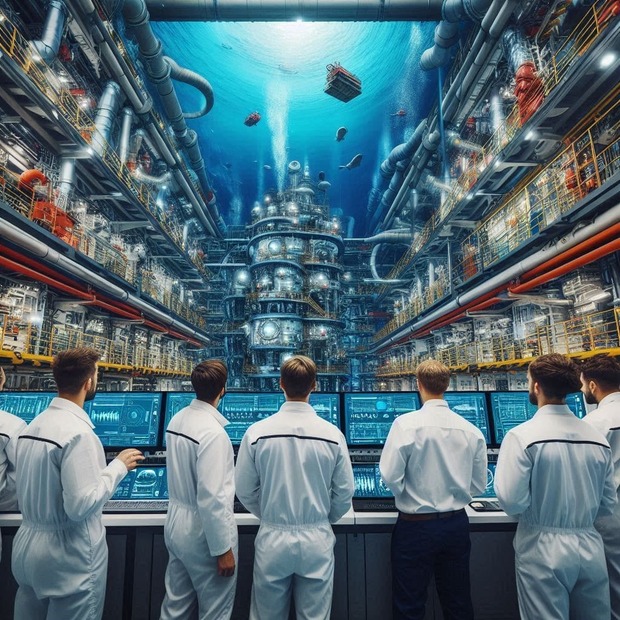Deep offshore technology is special tools and methods used to find, get, and manage resources from deep parts of the ocean, usually more than 500 meters below the surface. This technology is used in different areas like drilling for oil and gas, creating renewable energy, and checking the environment.
History and Important Steps
The story of deep offshore technology started in the mid-20th century with the first successful offshore oil drilling. Over time, there have been many advancements that have allowed us to explore deeper. Some important steps include:
- 1960s: Development of dynamic positioning systems.
- 1970s: Introduction of floating production storage and offloading (FPSO) units.
- 1980s: First use of subsea production systems.
Why It Matters
Deep offshore technology is essential for meeting the world’s growing need for energy. It helps us reach underwater resources that we couldn’t get otherwise. This technology also supports renewable energy projects, which are important for a sustainable future. It boosts the economy, creates jobs, and leads to new innovations.
Who Uses This Technology?
- Many groups are involved in deep offshore technology, including:
- Oil and Gas Companies: Like ExxonMobil, Shell, and BP.
- Renewable Energy Companies
- Technology Developers
- Regulatory Bodies
Important Tools and Systems
Deep-Water Drilling Equipment: Tools like drilling risers, blowout preventers, and drillships with dynamic positioning systems are used to drill safely and precisely.
Subsea Production Systems: These systems help extract oil and gas from underwater reservoirs using tools like subsea trees and flowlines.
Floating Production Storage and Offloading (FPSO) Units: Floating vessels that process and store extracted hydrocarbons.
Remotely Operated Vehicles (ROVs): Unmanned submersibles used for underwater tasks like inspection and repairs.
Autonomous Underwater Vehicles (AUVs): Self-navigating submersibles used for mapping the seafloor and collecting data.
Safety and Monitoring Systems: Tools to monitor offshore equipment and ensure safety.
Uses of Deep Offshore Technology
Oil and Gas Exploration: Helps access vast underwater reserves.
Renewable Energy: Used in offshore wind farms and for generating wave and tidal energy.
Environmental Monitoring: Tools like AUVs and ROVs collect data on marine life and water quality.
Underwater Mining: Extracts minerals from the ocean floor.
Military and Defense: Used for underwater surveillance and submarine operations.
Benefits
Access to Resources: Reaches underwater resources like oil, gas, and minerals.
Improved Efficiency: Advanced technology makes operations more efficient and productive.
Economic Growth and Jobs: This creates jobs and boosts the economy.
Technological Advancements: Leads to innovations that benefit other sectors.
Environmental Conservation: Supports sustainable practices and environmental monitoring.
Challenges
High Costs: Projects are expensive and involve financial risks.
Technical Difficulties: Harsh underwater conditions require reliable equipment.
Environmental Concerns: Risk of oil spills and habitat disruption.
Safety Risks: Requires strict safety measures to protect workers and the environment.
Political and Economic Uncertainties: Changes in laws and energy prices can affect projects.
New Innovations
Better Drilling Technologies: New methods for safer and more efficient drilling.
Advanced Subsea Processing: Techniques to process oil and gas on the seafloor.
Improved Underwater Robots: More advanced ROVs and AUVs for complex tasks.
Renewable Energy Solutions: Better designs for wind, wave, and tidal energy systems.
Enhanced Safety Systems: New tools for real-time monitoring and predictive maintenance.
Future Trends
Automation and AI: More use of smart technologies to improve efficiency.
Growth in Renewable Energy: More offshore wind, wave, and tidal energy projects.
Innovations in Subsea Mining: Better technology for environmentally friendly mining.
Focus on Environmental Protection: Continued efforts to protect marine ecosystems.
Integration with Smart Technologies: Using AI and digital tools for better decision-making.
Comparisons
Deep Offshore vs. Shallow Water: Deep offshore projects are more complex and costly but access larger resources.
Offshore vs. Onshore: Offshore projects are harder to manage but have less impact on land.
Different Offshore Energy Types:
Oil and Gas: Still a major energy source.
Wind: Rapidly growing due to better turbine technology.
Wave and Tidal: Emerging sources of renewable energy.
User Guides
Offshore Drilling: Steps include site selection, rig setup, and drilling operations.
Operating ROVs and AUVs: Requires special training for navigation, sensor operation, and maintenance.
Safety Procedures: Includes risk assessments, emergency plans, and safety drills.
Subsea System Maintenance: Regular inspections and data analysis to keep systems running smoothly.
Managing Wind Farms: Involves site assessment, turbine installation, and maintenance.
Conclusion
Summary of Key Points
Deep offshore technology encompasses a wide range of advanced equipment, techniques, and methodologies used for exploring and managing resources in deepwater environments. It plays a crucial role in the oil and gas industry, renewable energy production, environmental monitoring, and underwater mining. The technology offers significant benefits, including increased resource accessibility, enhanced efficiency, economic growth, and environmental conservation.
Future Implications and Recommendations
The future of deep offshore technology is promising, with ongoing innovations and developments driving growth in various sectors. Continued investment in research and development, along with supportive policies and regulations, will be essential for advancing the technology and ensuring sustainable practices.
Call to Action for Further Education and Innovation
To fully realize the potential of deep offshore technology, stakeholders must prioritize further education and innovation. This includes training the next generation of engineers and technicians, fostering collaboration between industry and academia, and promoting sustainable practices. By doing so, the deep offshore industry can continue to thrive and contribute to a sustainable and prosperous future.
FAQs Navigating Common Queries
How does deep offshore technology help the environment?
Advanced monitoring systems help protect marine life, and renewable energy projects reduce reliance on fossil fuels.
What are the challenges of deep offshore technology?
Challenges include high costs, technical difficulties, environmental concerns, and safety risks.
What are ROVs and AUVs?
ROVs (Remotely Operated Vehicles) are robots controlled from the surface, and AUVs (Autonomous Underwater Vehicles) are robots that can operate on their own underwater.
What is the future of deep offshore technology?
The future includes more use of automation and AI, growth in renewable energy projects, and better environmental protection measures.
How is deep offshore technology used in renewable energy?
It is used to build and manage offshore wind farms and harness energy from ocean waves and tides.
What safety measures are taken in deep offshore operations?
Safety measures include regular inspections, emergency drills, and real-time monitoring systems.

